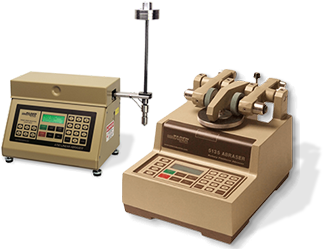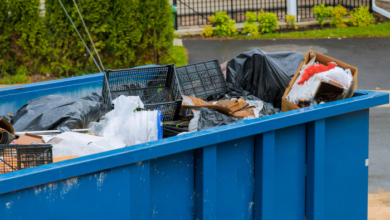How Does an Abraser Work? Understanding the Mechanics of Material Abrasion Testing

Are you curious about the workings of an abraser? Wondering how this magical device can assess the durability and longevity of materials? Look no further!
In this blog post, we will delve into the mechanics of material abrasion testing and unravel the secrets behind this fascinating process. Whether you’re a scientist, engineer, or simply intrigued by the science behind everyday objects, join us on this journey to understand how an abraser works. Get ready to be amazed as we uncover the hidden world of material abrasion testing!
What is an Abraser?
An abrasive is a material that can remove material from a surface by rubbing or abrading. This rubbing action can be caused by particles in the abrasive, a motion of the tool on the surface, or some type of mechanism within the tool itself. Abrasives are used in many industrial and commercial applications to remove materials from objects.
The three main types of abrasives are sandpaper, diamond, and chrome-molybdenum-steel (CMS) blades. Sandpaper is made up of small, rough pieces of paper that are glued to a backing sheet. The small particles in the sandpaper cause it to rub against the object being polished.
Diamond is made up of tiny crystals that are sharpened on both ends. When these crystals rub together, they create a rougher surface than if just one end was sharpened.
CMS blades are made out of several different materials including steel, aluminum alloy, and titanium. These blades have serrated edges that cause them to grind against each other as they move across the surface being polished.
How Does an Abraser Work?
An abraser is a machine used in industrial and laboratory settings to remove material by roughening its surface. This roughening action produces microscopic scratches or pits on the material’s surface. The object being abrased can be any solid, non-metallic object.
The basic mechanics of an abraser are quite simple. A rotating drum or disc is mounted on a motor shaft, and the object being abrased is placed against the disc. As the drum rotates, it rubs the object against the sharp edges of the disc. The rubbing action causes tiny scratches or pits to form on the object’s surface.
The type of abraser used depends on the material being abrased. Mechanical abrasives such as sandpaper are typically used to remove paint, lacquer, rubber, and other similar materials. Chemical agents such as acids are also frequently used to remove wood and plastic products from their original shape.
Types of Abrasers
There are many types of abrasers, each with its own specific purpose. Some abrasers are specifically designed for removing material by rubbing against the surface of the material. Others use a rotating drum to rub the material against a series of abrasive paddles. Still others use jets of water, air, or other fluids to remove material.
Abrasives can be grouped according to their intended action on the material being abraded. The three main groups are mechanical abrasion, physical abrasion, and chemical abrasion. Mechanical abrasives include sandpaper, wire brushes, and diamond films. Physical abrasion includes rubbing with stones or other hard substances, such as clay or glass beads. Chemical abrasives include acids and bases.
How to Mount an Abraser
What is an Abraser?
An abraser is a machine that removes material by rubbing it against a hard surface. The hard surface wears away the material, which in turn exposes the underlying layer. This process can be used to test materials for their resistance to abrasion or for their wear characteristics.
How Does an Abraser Work?
The basic principle behind an abraser is simple: you rub something against a hard surface to wear it down. This process can be used to test materials for their resistance to abrasion or for their wear characteristics. The key to making an abraser work effectively is choosing the right abrasive material and creating the appropriate rubbing conditions.
Abrasive Materials
One of the most important factors when using an abraser is selecting the right abrasive material. The type of abrasive material affects how quickly and thoroughly the machine will wear down your material. There are several different types of abrasives available, each with its own advantages and disadvantages. Here are some of the most common types of abrasives:
Coarse Abrasives
These are made from materials that have large grains size. They’re best suited for rougher surfaces, since they produce more friction than finer abrasives. Coarse abrasives are also less expensive than finer ones, so they’re often used in lower-quality machines. They tend to cause more damage to the material than finer abrasives
What to Expect When Testing a Material with an Abraser
Materials can be abraded using a variety of techniques and tools. The most common type of abraser is the sandpaper wheel, which uses grits ranging from 100 to 3000. Abrasion testing is used to identify the physical and mechanical properties of a material after it’s been abraded.
The materials that are typically tested are metals, plastics, composites, and coatings. The surface profile of the material is mapped out on a test piece using a coordinate system prior to abrasion. Once the surface has been abraded, several measurements are taken including the roughness height (rh), average roughness (ar), peak roughness (pr), maximum displacement (md), and average displacement (adr). These measurements help to determine the physical and mechanical properties of the material such as:
- Strength
- Density
- Resistance to wear and tear
- Tensile strength
Conclusion
In this article, we will explore the mechanics of material abrasion testing and how an abraser works. We will also discuss some common abraser test methods and their limitations. By understanding these basics, you will be able to make better decisions when specifying an abraser for your specific application.
You might Also Like:



